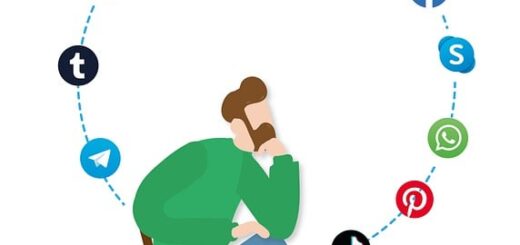Case Study: $22,500 in 48 Hours with His First Newsletter
 From 2006 to 2012, Evan Kelly ran his own business as a relationship coach.
From 2006 to 2012, Evan Kelly ran his own business as a relationship coach.
In the beginning, finding clients was difficult. But through trial, error and some good advice, he devised a 3 step sales funnel that kept him booked solid, beginning with $22,500 in just 48 hours.
This is the simple three-step sales funnel that revolutionized his business:
Step 1: Building an Audience
Evan’s first website cost $2,000 and made every blog post he published look like complete gibberish. Yup, that’s right – he gotten taken by a so-called website developer who was great at taking money but terrible at building websites.
Despite the terrible website, visitors still subscribed to his newsletter at the rate of one or two per day.
One or two doesn’t sound like much, and this is where a lot of people would become discouraged. Evan, however, plugged on.
Since he couldn’t post on his site without his articles looking like a dyslectic’s nightmare, he relied on the keyword in his domain name to generate his traffic.
These days that probably wouldn’t fly, but you also would know better than to spend grand for a site that doesn’t work. Challenges change with the times, right?
Since he couldn’t post on his site, he relied on sending long emails to his list. At the time he didn’t even have an autoresponder sequence, so every day was another day of long form email writing, forcing him to learn copywriting.
Step 2: Introducing a Low-Cost Offer
Evan wrote a short 50-page ebook and promoted it heavily to his list, getting maybe 2 or 3 sales per month. Remember, his list was still quite tiny.
But writing a brand-new email every day helped him to improve his copywriting skills, which were about to come in handy.
Step 3: The High-Ticket Close
With a subscriber base approaching 200, he wrote a persuasive sales letter in a Google Doc. He converted the letter to PDF and sent it directly to his handful of e-book buyers.
The offer – a one-on-one coaching package for $4,500 and limited to just 5 people – was met with unexpected enthusiasm. Evan’s nervous anticipation turned into exhilaration when this email with PDF attachment yielded a staggering $18,000 within 24 hours.
A subsequent email to the remaining subscribers secured an additional sale, bringing the total revenue to $22,500 in just two days.
Not bad for a newbie with a broken website.
A Newfound Passion Ignited
As you can imagine, finding $22,500 in his Paypal account hooked him on direct response marketing and copywriting.
Notice the challenges:
- An overpriced website that was nearly useless
- No autoresponder sequence
- Only a bare trickle of subscribers
- Slow sales of the ebook
And still, with a list of less than 200 people, Evan was able to make $22,500 on his first coaching offer.
Most marketers would be terrified to ask for $4500 for one-on-one coaching. Even Evan admits sending out that sales letter was scary and he nearly didn’t do it.
Imagine if he had asked for only $500 for his coaching. True, he would have made $2500, but he also would have lost the opportunity to receive $20,000 more for the same work.
There are lots of tips and strategies for selling high ticket coaching and products that are awesome and genuinely work, including:
- Identify and target your ideal client
- Become an Authority by creating valuable content
- Showcase testimonials, case studies, and client success stories
- Entice potential clients with valuable lead magnets that address their core challenges.
- Actively participate in online communities and forums where your ideal clients gather.
- Highlight the life-changing outcomes your program offers, not just features.
- Offer limited spots or VIP options to create scarcity and enhance perceived value.
- Provide flexible payment structures.
- Offer a money-back guarantee to mitigate risk and build trust.
- Develop a strong sales page and proposal that clearly articulates the program’s value.
- Actively listen to potential clients’ needs and personalize your approach.
- Weave anecdotes and client success stories into your sales conversations to connect on an emotional level.
- Anticipate common objections and prepare clear, persuasive responses.
- Nurture leads with targeted email sequences that educate, engage, and promote your program.
- Collaborate with complementary businesses to reach new potential clients.
- Provide exceptional service throughout the coaching process to ensure client satisfaction and referrals.
But there is one tip that you won’t find anyplace that you can learn from Evan, and it’s this:
Perseverance coupled with confidence can work miracles. Are things going wrong? Keep going. Are your subscribers trickling in? Treat them like royalty anyway. Are you afraid to charge what your products or services are worth? Bolster your confidence, move through your fear and price according to the benefits you bring to your customers.
Selling high-ticket products is a marathon, not a sprint. When you implement these strategies consistently, refine your approach based on data, and build strong relationships with your potential clients, you can cultivate a thriving high-ticket business.
4 Simple Steps to Full Time Income with Part Time Effort
Many marketers believe that launching a successful online business requires full-time commitment. But if you’re working a full-time job, you can still build a thriving business in about 2 hours per day simply by following these 4 steps:
Step 1: Swapping Your Push Button Fantasy for Realism
Bill Gates famously said, “Most people overestimate what they can achieve in a year and underestimate what they can achieve in ten years.” This sentiment rings true, especially when starting a business. Avoid the siren’s song of setting unrealistic goals like making a million dollars your first year.
The key to crafting a successful business plan lies in asking the right questions. Instead of fixating on a push button million-dollar dream, consider: “How do I want my Mondays to look?”
Maybe the answer doesn’t involve a complete career overhaul, but instead shifts what you’re already doing in your job to a more profitable and rewarding business. Maybe you want to create content for an hour each day before work or jump on social media to promote your business. What do you enjoy? What do you naturally want to do on Monday?
Focusing on achievable goals that enhance your well-being fosters a more sustainable and fulfilling approach. If you hate social media, then don’t make it a part of your business plan. If you love creating videos, then build your business around that.
Step 2: Leverage Your Unique Vantage Point (UVP)
Building a product from scratch is a daunting task. Instead, capitalize on your existing strengths and experiences. Everyone has a Unique Vantage Point (UVP) – a well of knowledge and skills accumulated over time.
For example, maybe you grew up on a farm, love animals, do word working on the weekends, live in the country, did a stint in the Air Force and retired from Wall Street. No one else has this exact background to draw from, giving you a UVP without competition.
Maybe you make videos about word working in which your animals appear, or you talk about investments that make sense to people who don’t live the city life, or your tribe is retired professionals or military who now seek the country life.
Your unique combination of experiences and skills are things you can build on. The foundation is already there, you just need to decide how you will leverage your UVP.
Step 3: Finding Your “Big Idea” – Less is More
As a part-time creator, focus beats ambition. Spreading yourself too thin can compromise the quality of your work. Instead of trying to create 12 products this year, how about creating one polished product that you market until you get $100,000 in sales? You’ll enjoy the process more, you’ll be less stressed and because it’s your sole focus, your product can become exactly what people are looking for.
Here’s a helpful framework for prioritizing your product ideas:
- Unique Advantage: What sets you apart and where does your expertise lie?
- Passion Project: What are you enthusiastic about creating and promoting?
- Market Need: Does your product address a specific problem (or problems) faced by your target audience?
A single well-executed product is superior to a collection of half-baked ideas. Create a minimum viable version, put it out there, get feedback, add and refine, sell it, improve the offer, sell it some more… you’ll become known for this product and the results your customers get from it. You’ll be far less stressed than if you were launching a new product every month. And done right, you can make just as much profit by focusing on one stellar product than from launching a dozen half-baked products for a more sustainable and rewarding experience.
Step 4: Time: A Reality Check
Building a successful product involves far more than just the initial conception. The process encompasses:
- Research: Thoroughly understand the problem your product aims to solve.
- Planning: Develop a comprehensive plan for your product’s solution.
- Building: Construct the first version of your product.
- Review & Refinement: Evaluate the initial version and make necessary improvements.
- Content Creation: Develop content to support your product launch.
- Launch Execution: Strategize and execute a successful product launch.
- Post-Launch Support: Address any issues and continually refine your product.
This entire process, from initial concept to post-launch support, can take as much as six months. Choosing the right problem to solve is crucial – spending six months building a product nobody wants is a recipe for wasted time and effort.
That’s why I always suggest creating a minimum viable version to get feedback from users. Ask the right questions of your beta users and they will tell you if the product is useful, what’s missing, what needs improving and even how best to market it.
Bottom Line
Balancing a part-time business with a full-time job and personal life demands honesty with yourself along with planning and research.
Be realistic in your goals, identify the activities that yield the highest return on investment and prioritize those ruthlessly.
By implementing this strategic approach, you, the part-time creator, can compete effectively with full-time creators in the marketplace.























